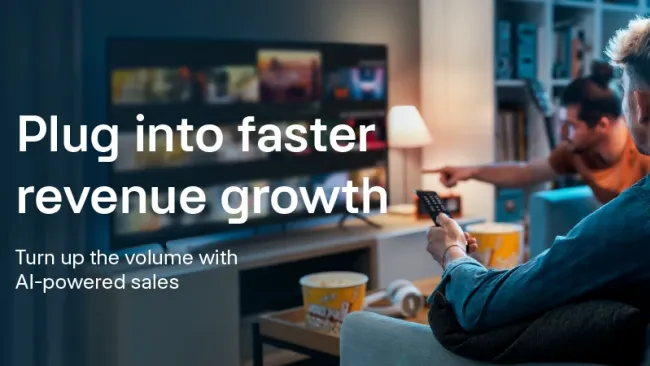At its core, excellent customer support is about making your customers feel understood and appreciated by your business. And while customer support is rarely the first thing that readers associate with Dow Jones, parent company to The Wall Street Journal, Barron’s, and MarketWatch, it’s a critical part of the news and publishing firm’s success.
Thom San Filippo, vice president of customer service and experience design at Dow Jones, explains what it takes to make a global, tech-savvy audience feel appreciated and why the company is doubling down on contact center training and development in a digital-first era.
What is a typical day on the job like for you?
Thom San Filippo: I’ve been at Dow Jones now for 20 years. The last 13 I’ve been in the customer service department and I like to say that I’ve never had the same day twice. Part of that is because we’re a news organization. We’re 24/7 and things change every day. Currently I have 500 staff and we’re in eight different locations supporting 11 different languages.
How data-driven is your organization?
TSF: We have KPIs and service levels, like all other companies. One of the ones that we push on and folks argue with us all the time about, might be AHT on a part of my business. For Wall Street Journal customers, for example, we’ve come to find out that our customers want speed on their calls and they want it to be easy.
And we’ve been able to show the staff that we’re not doing it to make them work faster or harder or get more work. We actually just showed them numbers in the last six months. As we took 30 seconds off phone calls, we were able to drive Net Promoter up seven points. So clearly our customers want it to be faster and easier.
How does this insight translate to creating a good online user experience?
TSF: We have an entire reporting team that works in my department and they’re pushing almost on a daily basis. Some customers like real-time feedback. So it could be, “Hey, today we logged a [complaint about] an ad covering the page,” and we’ll know that early in the day so the group in the advertising department will quickly get on that.
Or it’ll just be something that’s a slow burn and takes a long time for folks to figure out like, “Hey, your page takes a lot longer than x, y, or z news organization’s page takes. What are you doing about that?” And those two examples are actually real ones that our tech folks have been working on for the last two years.
What’s an example of a recent customer experience improvement you’ve made?
TSF: One of the simple and most logical ones was mobile optimization for our self-service websites. And we introduced a chatbot. We have volumes [of data] on how many people come to our site on mobile or desktop and we have an iPad edition as well.
We never had a mobile-optimized website for our customer service. So, we introduced that and we went from zero—because the desktop site didn’t work very well—to almost 18 percent of all of our self-service now being done on the mobile application. So that was a big win for us.
Do you find it easier to make changes on the B2B side of the business versus B2C?
TSF: No, actually, because so many more people are involved in the impact. So if you worked for one company and you asked for or requested a change, and I was about to make that change, we have to alert and work with some of the other companies to see if that would impact them.
What do you find gets overlooked in creating a customer-centric organization?
TSF: I would say the customer. I think it’s really a balance. We always try to give the customer everything they want. And that’s really not practical and sometimes we have to pull ourselves back on that. There needs to be a balance of what’s right for the customer versus what’s right for the business. And I think that’s actually a healthy conflict. For example, we have experience architects that we embed in product designs and rollouts. And I think that conflict that they bring to the room actually is healthy in that it spurs new ideas.
How do you balance data decision-making with the human side of customer experience?
TSF: I have an entire reporting department in my group that presents volume metrics as well as the complete voice of the customer. Over time, Dow Jones has built out an entire data organization that can do everything from socio-economic situations to overall utilization. If a customer exhibits certain behavior—download an app, read two stories in the newsletter—maybe their propensity to churn is different. So, we bring that data to bear.
But nothing hits home like just listening to a call. And recently we’ve been providing our CEO with calls that he listens to, as well as bringing more calls into various meetings or presentations. If you read a chat transcript or you read an email or you listen to a call, that definitely hits home for a lot of people.
How are you approaching AI and automation?
TSF: Both [technology and humans] play a role and neither one should get overlooked at this point. You know, AI at this point is probably one of the biggest buzzwords and everybody wants to bring it in and I agree. It’s the next best thing. But I think what people will find out is the better you get at that, what you’re left with are high-touch work where the skills that are necessary to manage it in a call center or a contact center are a lot harder. So you have to reinvest in the staff, the people that actually communicate our brand out to our customers.
As someone who’s always on the lookout for improving the customer experience, what contact center trends are you watching?
TSF: It’s funny, I’ve been to three different conferences in the last six months and everywhere is AI, AI and chatbots. That’s the next big thing that’s out there. I think very few people are doing a good job of those right now, but it’s just a matter of time before everybody gets better at it. And all that’s going to do is get rid of all the low-hanging fruit. It’s going to leave a higher-touch contact for the contact center to deal with. [Training is also a big trend we’re following.] We did the Apple News rollout and we found out about that project days before it went live. In 24 hours we had to train 400 agents across the globe.
So, we are currently looking for better and easier and more dynamic ways to do training across the board and to get information out to folks as fast as possible. Our typical training on either B2B or B2C right now is mostly modules and the old-fashioned stand up with a presenter in front of the room. As we look toward better web-based training and online training, we’re also looking for gamification in that world. So putting out little snippets every day for people to get better and to continually learn and improve over time.
Is that because you are hiring more agents and thinking more in terms of scale, or is it that they need to gain more skills faster?
TSF: It’s a little of both. This year [2019] we, for the first time, insourced a small portion of our team. So we outsourced 80 percent of our work with teams in five locations [plus our insource team]. So, as you try to train across multiple locations 24/7, some of the speed is needed to get folks to learn these things. And yes, we are also increasing the need for our folks [to have specialties].
Do you have advice for companies on preparing for the future of CX?
TSF: Try things, fail quickly, and start all over again. Back to the chatbots, we worked with a company in the beginning of the year and they showed us two or three iterations that they had done for some pretty big-name companies. All of them got scrapped within the first six months and they went back to the drawing board.
We put it out there and then we found out weeks later, oh, you know, this gives a rise to email or satisfaction works on this transaction but not that transaction. So, we were able to make some adjustments and now we’re doing a whole big phase two on the things we’ve learned. By getting it out there faster, the things that weren’t working were discontinued very quickly and the things that were working are moving forward and being enhanced.
So, either you’ve got to try quickly and cheaply and see if it works and pull it back or step back a little bit and see what else works in the marketplace for a similar business like your own.
















